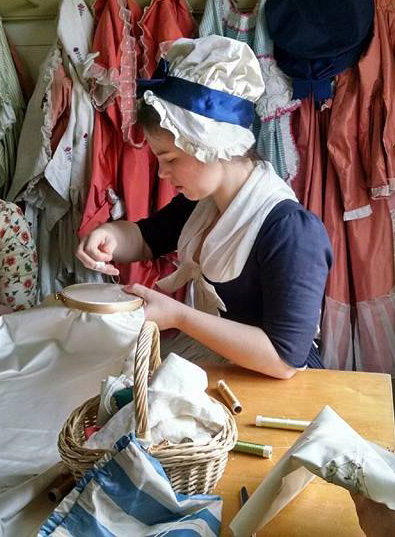 It’s Abby again, from the Margaret Hunter Millinery shop. This time, I’d like to talk about our apprenticeships and hopefully this post will answer any questions that might be floating around out there.
It’s Abby again, from the Margaret Hunter Millinery shop. This time, I’d like to talk about our apprenticeships and hopefully this post will answer any questions that might be floating around out there.
To start, I think I need to clarify the biggest differences between 18th- and 21st-century apprentices. Often, the first misconception is our ages. Unlike the 18th century, where apprentices’ parents or guardians would pay the master or mistress of the shop to teach and care for a child, Colonial Williamsburg apprentices are full-time positions and most of us are 20 and older.
Each trade within the Foundation is unique and the apprenticeships are all set up a little differently. While I will explain to you how my trade works, it won’t be exactly the same for the Shoemakers, Wheelwrights, Blacksmiths, etc. Just something to keep in mind before I prattle on about what has been a huge part of my life.
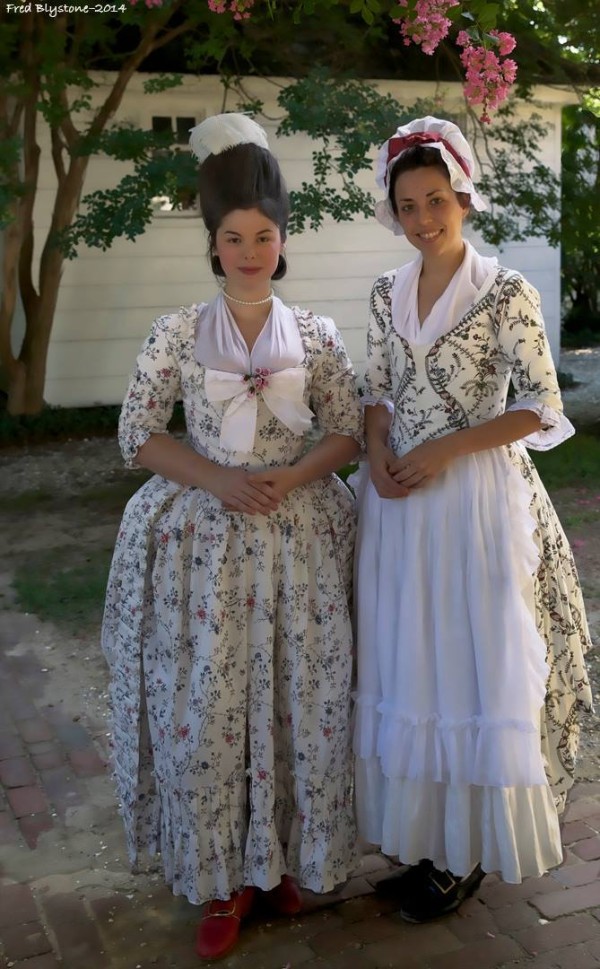 My trades of Millinery and Mantua-making were considered “newer” trades in the 18th century (versus the tailors, blacksmiths, etc). We had fewer regulations when it came to how the trade was run and it wasn’t uncommon for girls to apprentice for only a couple of years versus the traditional seven. Keeping that in mind, my personal apprenticeship spans two trades over a 6-7 year time frame. It is possible to finish early, but the amount of work that is required to complete the apprenticeship makes it a little tricky.
My trades of Millinery and Mantua-making were considered “newer” trades in the 18th century (versus the tailors, blacksmiths, etc). We had fewer regulations when it came to how the trade was run and it wasn’t uncommon for girls to apprentice for only a couple of years versus the traditional seven. Keeping that in mind, my personal apprenticeship spans two trades over a 6-7 year time frame. It is possible to finish early, but the amount of work that is required to complete the apprenticeship makes it a little tricky.
The first two years are heavily focused in fine handwork and the projects related to those two years reflect that. Making shifts—for example—requires the finest hand-sewing. In the 18th century, milliners and mantua-makers did not have to be the best stitchers (sometimes it was more important to get the project done). The same goes for today. Since we are preservers of the trade, we generally strive to attain 18th-century work speeds to better understand production levels from that time period.
Currently I am in year three of my apprenticeship, which means I am working on millinery. I’m learning how to cut out, design, and construct all the accessories that were worn during the 1700s. I really enjoy working on caps; their little puzzle pieces of fluff can’t really be set in stone. That experimentation is what I love about the shop. I also really enjoy looking into the more unusual accessories worn during the 18th century.
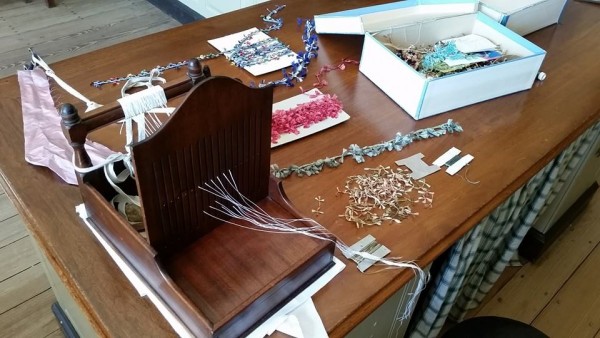 Year 4 will be branches of the trade, and my favorite branch is hairdressing! Though I started researching it out of necessity, I have become obsessed with learning 18th century techniques. Being able to dress the hair with the pomades and powders from the period makes it so much easier to figure out how the caps, hats, poufs, and other headpieces were worn. It was a branch often practiced by milliners as it helped to improve their chances of being hired as a ladies’ maids for the aristocratic. Below is video of me dressing our intern, Rebecca’s, hair along with a picture of the final presentation.
Year 4 will be branches of the trade, and my favorite branch is hairdressing! Though I started researching it out of necessity, I have become obsessed with learning 18th century techniques. Being able to dress the hair with the pomades and powders from the period makes it so much easier to figure out how the caps, hats, poufs, and other headpieces were worn. It was a branch often practiced by milliners as it helped to improve their chances of being hired as a ladies’ maids for the aristocratic. Below is video of me dressing our intern, Rebecca’s, hair along with a picture of the final presentation.
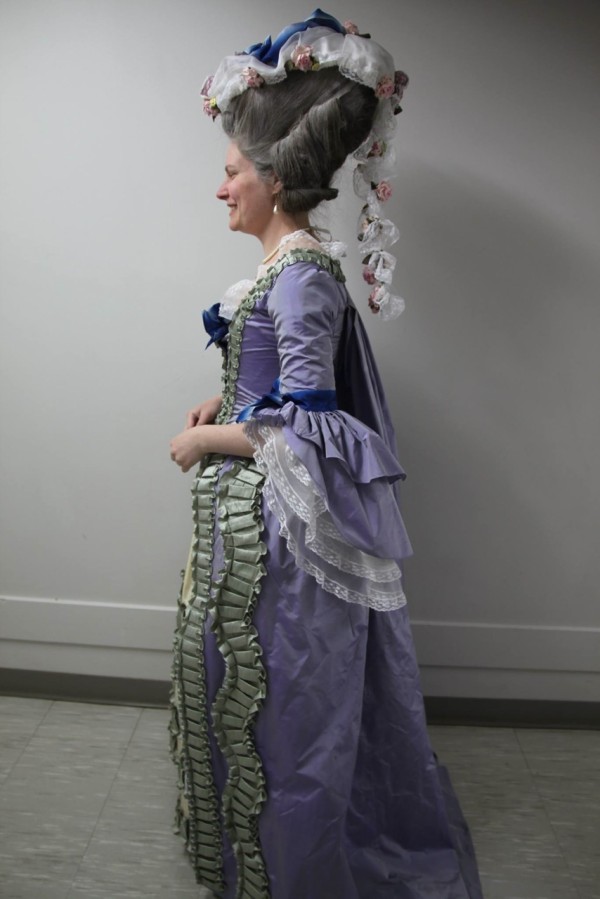 Years 5 and 6 are all about mantua-making. As some of you might know, I love, love, love manuta-making! Sculpting the fabric to contour around the woman’s form, creating a well-fitted and beautiful gown or jacket—I just love it. It’s not always easy and sometimes it makes me want to curl up into a ball and cry like a wee baby. But when you get it finished, man—it is an awesome feeling! With so many different gown styles being discussed amongst dress historians, I am itching to get going on some of the more unusual style of gowns that were worn during the last quarter of the 18th century.
Years 5 and 6 are all about mantua-making. As some of you might know, I love, love, love manuta-making! Sculpting the fabric to contour around the woman’s form, creating a well-fitted and beautiful gown or jacket—I just love it. It’s not always easy and sometimes it makes me want to curl up into a ball and cry like a wee baby. But when you get it finished, man—it is an awesome feeling! With so many different gown styles being discussed amongst dress historians, I am itching to get going on some of the more unusual style of gowns that were worn during the last quarter of the 18th century.
My final year will include final projects. For our shop, we must copy an image, copy an original, and then make something of our own choosing. At least one of the projects must be cut to fit a real body. Sarah, another apprentice, brought to life “The Morning Ramble, or, The Milliner’s Shop” last year for our anniversary academic conference. I haven’t set my mind on what I want to do quite yet but I have a little while before it becomes all-consuming.
 Once we complete our apprenticeships, our work is reviewed, and when everything is agreed upon—we are awarded a certificate of journey(wo)man! Though I really do love the title of apprentice, I am so excited for that day to come. I have wanted this job for so long now that being able to finally call myself one is really important to me. I’m proud to be an apprentice and to have this journey ahead of me. (Ha… see what I did there?!).
Once we complete our apprenticeships, our work is reviewed, and when everything is agreed upon—we are awarded a certificate of journey(wo)man! Though I really do love the title of apprentice, I am so excited for that day to come. I have wanted this job for so long now that being able to finally call myself one is really important to me. I’m proud to be an apprentice and to have this journey ahead of me. (Ha… see what I did there?!).
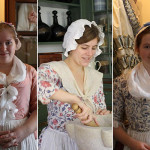
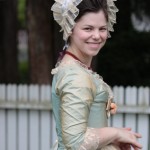

I love your blog and fb page! Have you considered offering online classes for mantua making? I would gladly pay to see you girls in action! 🙂
What an educational and great story!! Dressing the hair looks very time consuming and artistic too! Thank you for sharing your apprenticeship experiences. It is very encouraging to see how excited you are about your work toward becoming a journey(wo)man!! Please keep history alive!! The next time I visit CW, I will stop by the shop.